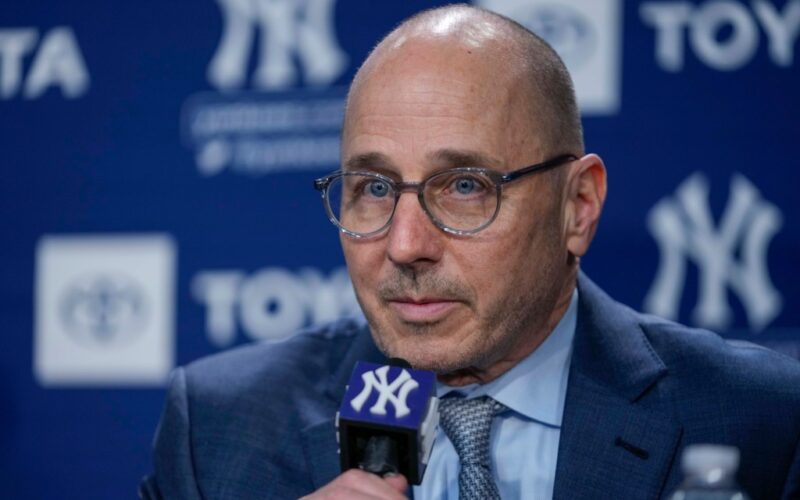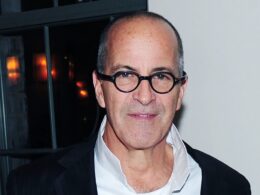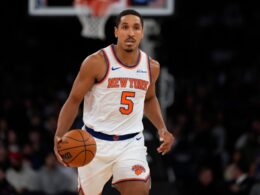It’s no secret that Hal Steinbrenner would prefer a payroll under $300 million, as the Yankees owner has shared his disdain for such an investment in the past.
And yet, the Yankees cleared that total with ease in each of the last two seasons, as their competitive balance tax payroll exceeded $316 million in 2024 and $318 million in 2025. Now there are reports that Steinbrenner wants to get under $300 million, though his wishes haven’t become reality in the past.
“I don’t know if that’s where we’re at,” Brian Cashman said Wednesday when asked about those reports. “I know that we are always fluid with our payroll situation. Out of all the things that we have here with the organization, payroll usually is not an issue that we’ve had to deal with much of.”
Cashman added that he has not been given an “ultimate payroll number” from Steinbrenner, who has not spoken to reporters in a group setting since the Yankees lifted their beard ban last spring. In the past, Cashman has routinely said that Steinbrenner is always willing to listen when the general manager suggests cost-incurring moves.
As of Wednesday, the Yankees’ 2026 CBT payroll is projected to be $258 million, per Cot’s Contracts. That ranked second behind the world champion Dodgers ($320.6 million).
With the 2026 CBT penalty thresholds set at $244 million, $264 million, $284 million and $304 million, the Yankees have already surpassed the first tier and are approaching the second one as they search for outfield, starting pitching and bullpen help, among other needs.
Considering the organization is championship-less since 2009, fans are looking for Steinbrenner to spend lavishly again.
Whether they spend $300 million or not, the Yankees are always one of the league leaders in payroll. However, there have been calls for Steinbrenner to invest a higher percentage of revenue into the team’s payroll.
According to data compiled by Forbes and Spotrac, the Yankees made $728 million in revenue in 2024, the second-highest total in baseball. While they then spent $362 million on payroll and competitive balance taxes in 2025, the third-highest total, that accounted for 49.7% of their revenue. That percentage ranked 11th in baseball.
“[The Steinbrenners have] always been supportive,” Cashman said, “so payroll is always obviously something we play with, but we’re pretty strongly invested.”
The Yankees’ 2026 payroll plans will become clearer with time, but another factor could be the impending expiration of the Collective Bargaining Agreement after the coming season and the anticipated work stoppage that could come with it.
Cashman previously said the Yankees will be “business as usual” when asked how labor concerns and the sport’s uncertain economic future could impact his team’s activity this offseason. However, the Yankees avoided a CBT penalty ahead of the last anticipated work stoppage with a $208 million payroll for the 2021 season.
NO CHISHOLM EXTENSION TALKS
Speaking of money, Cashman said that he hasn’t talked to Jazz Chisholm Jr.’s camp about an extension, something the candid character has expressed interest in.
“I want to be a Yankee, so I would definitely rather just re-sign with the Yankees,” Chisholm said after authoring the fourth 30-30 season in team history. “Obviously, it’s not my decision at that point.”
Chisholm, 27, is slated for free agency after the 2026 season. Cashman indicated that he would be open to “a legitimate conversation about value” with “one of the best second basemen in the game,” but the GM didn’t make any commitments.
HOW WILL RICE FIT IN?
Cashman echoed sentiments shared by Aaron Boone earlier this offseason, stating that Ben Rice “very well could be” the Yankees’ everyday first baseman in 2026. The GM went on to say first is the “more likely spot” for the 26-year-old, who can also catch.
Regardless of position, Cashman said he sees Rice having an “everyday” role. While Cashman alluded to the hard hitter receiving trade interest after a breakout year at the plate, he added that Rice has “forced his way into our future on an everyday basis.”
Cashman also said he’d like to pair a right-handed hitting catcher with lefty-swingers Rice and Austin Wells. Last year, the Yankees carried three left-handed hitting catchers at times, with J.C. Escarra completing the trio.
However, Cashman noted the catching market is “very thin.”
SET AT SHORTSTOP?
With Anthony Volpe set to miss the start of the 2026 season due to shoulder surgery, Cashman said that utilityman José Caballero would be the Yankees’ shortstop if Opening Day were today. However, today is not Opening Day, so Cashman left the door open for more competition.
The free agent market will be limited, as the costly Bo Bichette, a talented hitter but poor defender, may move to second or third. Ha-Seong Kim is the next best shortstop available, and there aren’t many inspiring options after that. Other available shortstops include Miguel Rojas, an enemy of Chisholm’s, and Isiah Kiner-Falefa, who has already flopped as the Yankees’ shortstop.
Barring an unexpected trade, the Yankees may just roll with Caballero, Oswaldo Cabrera and veteran non-roster invitees given their stated but unearned belief in Volpe.
There’s also top prospect George Lombard Jr., but Cashman didn’t sound gung-ho about the 20-year-old making his MLB debut next season, let alone on Opening Day. While the GM believes Lombard is “ready to go” defensively, he “looks like he needs more time” offensively after posting a .695 OPS at Double-A in 2025.
“So I wouldn’t think 2026 is on the horizon,” Cashman continued, though he didn’t completely rule it out.
DON’T DOUBT COLE
Speaking at the GM Meetings in Las Vegas, Gerrit Cole’s agent, Scott Boras, said the pitcher’s recovery from Tommy John surgery is going well.
Cole, who underwent the procedure last spring, recently threw a few bullpens at Yankee Stadium. He sent video from one of those sessions to Boras, who insisted that the 35-year-old will regain his dominant form after he makes his expected return in the early going of the 2026 campaign.
“I wouldn’t be throwing around chronological age when you’re in front of Gerrit Cole. Just giving you warning,” Boras said before comparing his client to Justin Verlander and Max Scherzer, whose careers have taken them into their 40s. “He’s in great shape, and he has all weapons available. He’s a remarkably durable, true No. 1. I don’t think any of us see any limits on him going forward for the years to come.”








